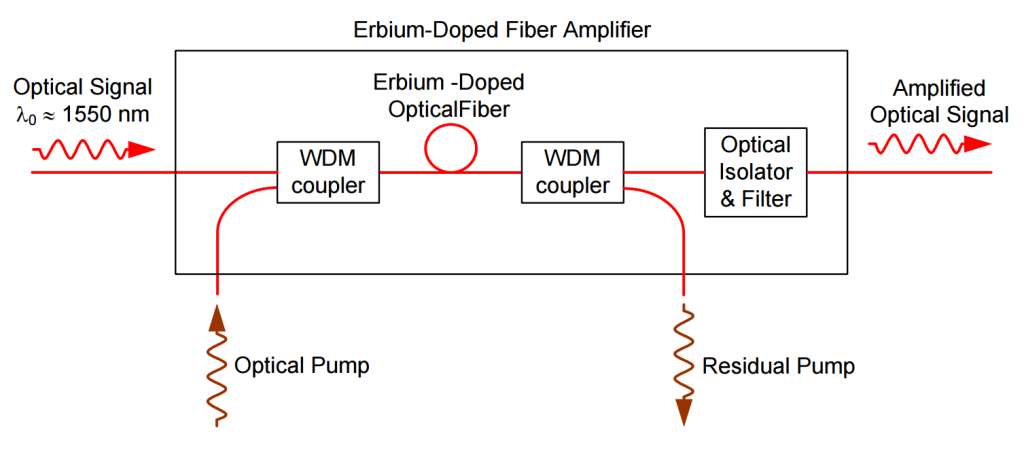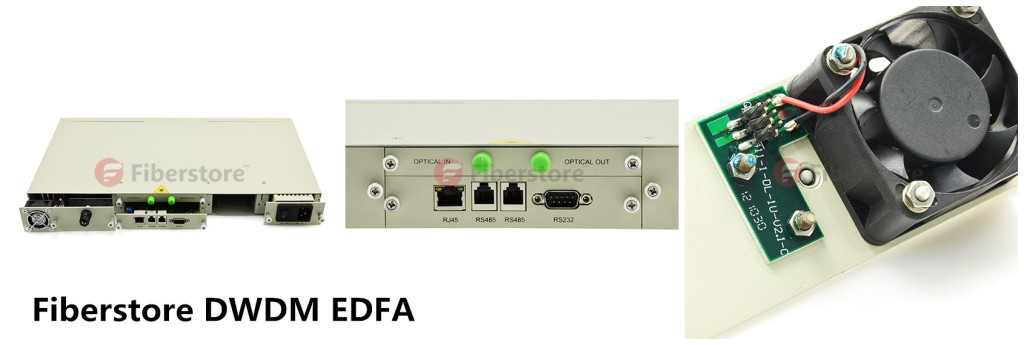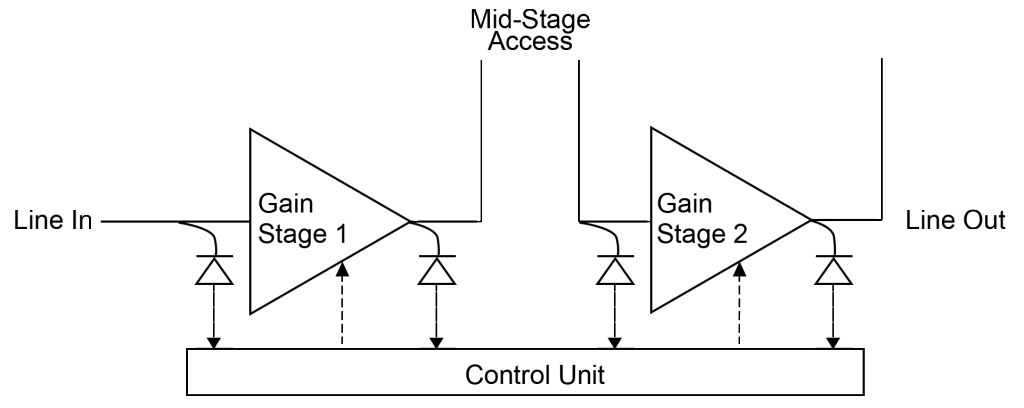An EDFA is an optical amplifier based on Erbium-doped optical fiber, that amplifies optical signals without converting them into electrical form. EDFAs use semiconductor lasers to pump Erbium Doped Fiber to amplify light in 1.5 μm wavelength region where telecom fibers have their loss minimum. It has low noise and can amplify many wavelengths simultaneously, which makes DWDM network possible and becomes a key enabling technology for optical communication networks. Since the realization of EDFA, it has developed rapidly and has become the amplifier choice for most applications in optical communication.
The structure and working principle of an EDFA are simple. EDFA consists of a glass optical fiber doped with Erbium ions, WDM coupler, isolators, optical filter and pumping supply.
The picture above shows how an EDFA works. When a beam of light that carrying signals passes the Erbium-doped optical fiber, a pump laser provides the amplifier energy at Erbium absorption peaks of 980 and 1480 nm, through the use of WDM couplers. Then an optical filter removes the remaining traces of the pump beam so that it doesn’t interfere with reception of the signal. Isolators are inserted into the amplifiers to minimize the reflections on the EDFA
First of all, you should make sure the network type in which you need to use EDFA. Depending on the network application, EDFA are generally designed into the following types:
- DWDM EDFA: for this type of network, EDFA needs to be not only high power low noise, but also gain flattened such that all wavelength channels can be amplified equally.
- SDH EDFA: For SDH network, EDFA design should allow maximum power budget to achieve the highest detection sensitivity.
- CATV EDFA: There is also EDFA designed for CATV application, which has low noise with heat dissipation and ventilation in mind to ensure a long operation life.
The way in which EDFA used is to enhance the performance of optical data links is also important in selecting EDFAs. Depending on this, three types of EDFAs can be found in the market:
- Booster EDFA: this EDFA is used to increase the optical output of an optical transmitter just before the signal enters an optical fiber.
- Inline EDFA: as the optical signal is attenuated as it travels in the optical fiber. The inline amplifier is used to restore the optical signal to its original power level.
- EDF pre-amplifier: this kind of EDFA is used at the end of the optical link in order to increase the sensitivity of an optical receiver.
Some other important elements should be considered before selecting EDFAs.
- Wavelengths: you should make certain how many wavelengths will go through the EDFA and the beginning and ending wavelengths, for example 1530 to 1562 nm. For single wavelength link, you should know clearly the exact wavelength.
- Power or loss budget: the budget tells us how much amplification you require for the whole link.
- The location of EDFAs: After the transmitter, before the receiver, or in the mid-span.
 Selecting the right EDFA seems not an easy thing. However, if you are not sure about the types and numbers of EDFAs, you can visit FS which supplies various EDFAs with high quality and low price, as well as free EDFA solutions meeting customers’ requests.
Selecting the right EDFA seems not an easy thing. However, if you are not sure about the types and numbers of EDFAs, you can visit FS which supplies various EDFAs with high quality and low price, as well as free EDFA solutions meeting customers’ requests.



